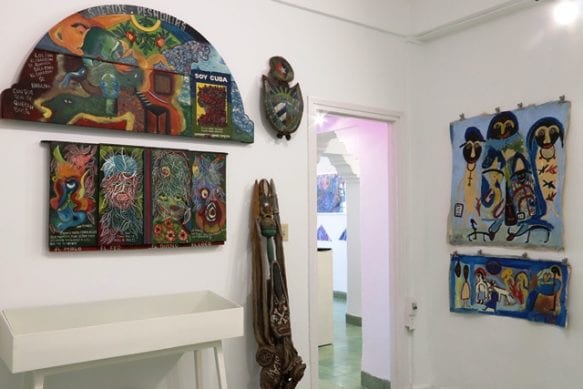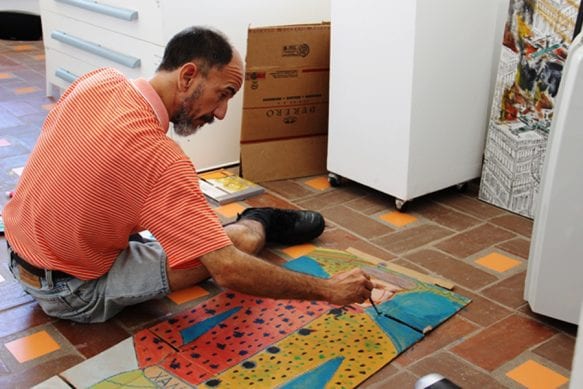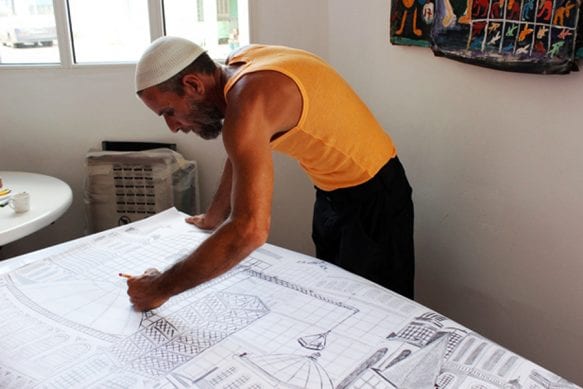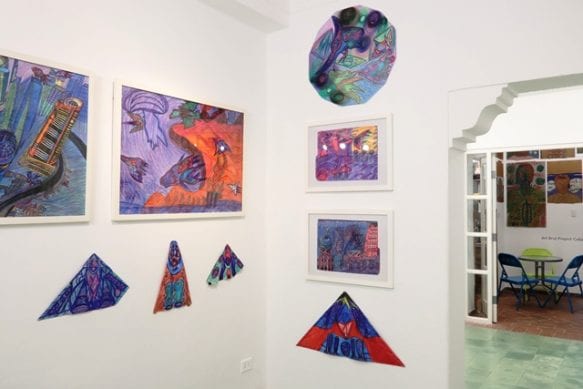Independent Project Promotes Art Brut in Cuba
The Riera Studio gallery has been leading these efforts since 2012, having a positive impact on the community and artists’ wellbeing.

HAVANA TIMES – Promoting works under the concept “Art Brut”, Riera Studio’s independent project seeks to encourage the creation and study of an art expression in Cuba that still faces reluctance, the artists which are normally ignored because they have no formal education in the arts.
A graduate from San Alejandro’s Fine Arts Academy and specializing in Engraving, Samuel Riera spoke to the IPS Cuba editing team about the creation and evolution of Art Brut Project Cuba, a project he has been leading since 2012, in Havana’s Cerro neighborhood.
Before this, Riera was in Venezuela, working with a social integration group that helped people with social problems and high rates of drug addiction, people who found in art a tool to communicate. He also followed the work of Espacio Aglutinador, by Cuban painter Sandra Ceballos, with great interest.
With these influences, he turned his attention to Art Brut, a term coined in 1945 by French artist Jean Dubuffet (1901-1985), who defined it as an art form that is made on the fringes of society and outside the official world of culture.

It was later redefined as Marginal or Periphery Art, and its followers developed their creative work without any contact with established arts institutions, answering to a strong personal motivation and using non-traditional materials and techniques.
Art Brut tends to reflect extreme mental states, personal idiosyncrasies or worlds of fantasy, developed by individuals with special psychological needs and/or social outcasts, factors which weigh heavily in the main line of arguing its authenticity and validity.
“Stemming from Dubuffet’s definition, we are trying to bring this concept a little closer to Cuba. There has been a great lack of information. The only predecessor we have is Samuel Feijoo (1914-1992), the man behind the Signos group, which was interested in social work and popular art,” Riera highlights.
And, he explained further: “After an initial study, we identified almost 60 people in Havana who were creating art in an isolated manner and that many of them had some form of mental illness or disorder.”
IPS: What are the objectives of Art Brut Project Cuba?
Samuel Riera (SR): It’s a space to bring together, protect, house and store Art Brut in our country. Plus, we have collected specialist literature with the idea of setting up a research center because universities don’t teach art students about this artistic movement.

IPS: Is this the only place on the island that promotes and gives this kind of art visibility?
SR: Yes. If only more would open up, because there is a great need for them. We wanted to create a more consolidated foundation and a museum. We even had the budget for this, but the way institutions work here hasn’t allowed us to get a building to house the Art Brut museum, at least not before a Contemporary Art museum is founded.
IPS: How many exhibitions have you held since 2012?
SR: Over 40, between national and international exhibitions. Some works exhibited here have been put up at the Outsider Art Museum (Amsterdam), or can be found in important private collections, just like they can be found in Chateau de Beaulieu in Lausanne, Switzerland, where the most important Art Brut collection is held.
IPS Cuba: How many artists has this studio taken on right now?
SR: There are about 35 active artists, although there are more, but their work varies according to their emotional state. Some people have seen what we do; others distance themselves, as if it were something contagious, but that just tells us that we need to carry on working with society for them to accept differences.
IPS: Why, in your opinion, do you think that Art Brut is still undervalued in Cuba?
SR: At a glance, because of the backwardness of our socialist reality. In theory, this form of art shouldn’t exist in this kind of society because there aren’t marginalized or marginal artists supposedly, or crazy artists out on the street. But, our reality is different and I believe that the principles of Art Brut go much further.
The absence of information and studies about the subject has meant that experts and the most important academics at Cuban universities don’t have the tools they need to be able to discuss dissertations on the matter. We know that there have been students who have wanted to write their dissertation on Art Brut and their proposals aren’t accepted. We decided to build a collection of books, images and photographic archives for any student or researcher interested in rebuilding this history in the future.

IPS: Is Art Brut something that hasn’t been present here in Cuba?
SR: Art Brut has always existed here, but by not redefining it, it has been mixed up with different artistic movements such as naive art, pop art and alternative art, as well as other periphery phenomena. As it’s not recognized, it’s being lost; as it’s not being studied or conserved, it’s being destroyed and disappearing; because many of these artistic processes take place in marginal social situations or environments.
IPS: What is the project’s social focus?
SR: We work with families because they are the ones responsible for artists’ wellbeing and emotional stability, as well as valuing their work. We try to make them see that the person they take care of, who they consider to be handicapped, is someone who is creating authentic art.
This might be on paper or other mediums, without any relation to traditional visual standards, and someone might say that it is garbage and throws it out.
Many artists who work as part of the project have changed their attitudes and social projection. We also make the most of the time they spend working in the studio and invite people and students to come and watch them create. It’s a way of stopping bullying, for young people and the community to become sensitized and change their own attitudes.
IPS: Do you have any way for people interested in your work to contact you?
SR: We have a website and a blog, which was conceived because of people’s Internet access problems, but they can access it using a Cuban platform. We are present on social media networks such as Facebook and Instagram.
